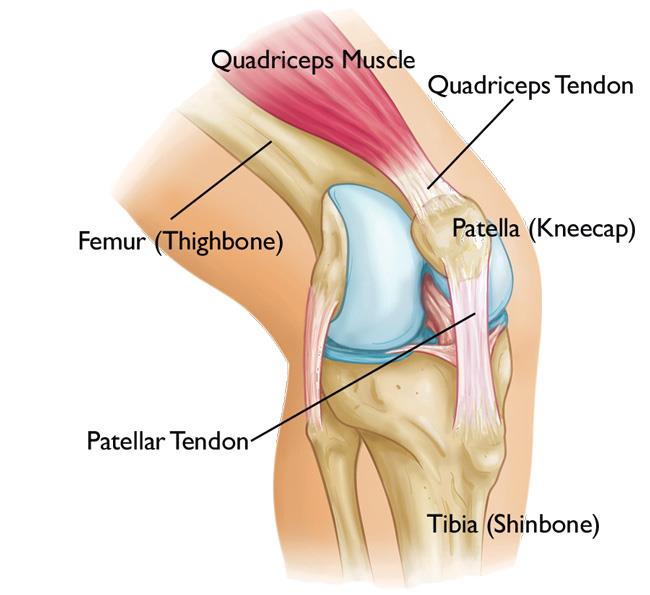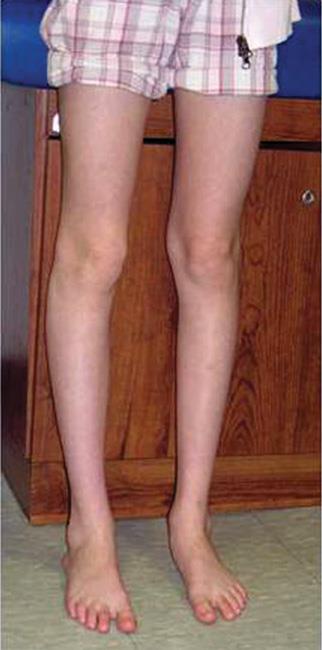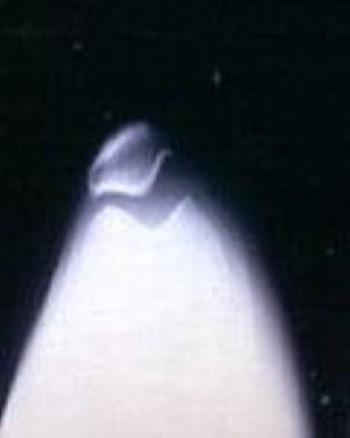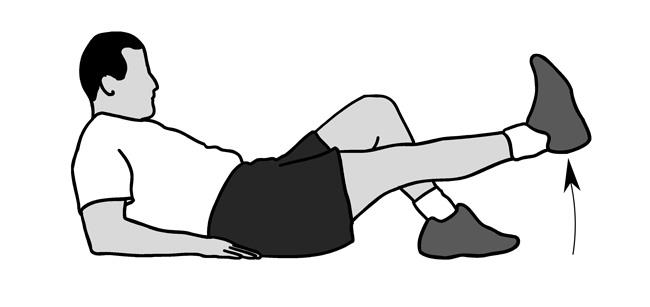Back Conditions Explained
Adolescent Anterior Knee Pain
We have selected the following expert medical opinion based on its clarity, reliability and accuracy. Credits: Sourced from the website OrthoInfo. Please refer to your own medical practitioner for a final perspective, assessment or evaluation.
This article addresses pain in the front and center of the knee.
What is adolescent anterior knee pain?
A teenager or young adult who is physically active and participates in sports may sometimes experience pain in the front and center of the knee, usually underneath the kneecap (patella). This condition—called adolescent anterior knee pain—commonly occurs in many healthy young athletes, especially girls.
Adolescent anterior knee pain is not usually caused by a physical abnormality in the knee, but by overuse or a training routine that does not include adequate stretching or strengthening exercises. In most cases, simple measures like rest, over-the-counter medication, and strengthening exercises will relieve anterior knee pain and allow the young athlete to return to his or her favorite sports.
Anatomy
The knee is the largest and strongest joint in your body. It is made up of the lower end of the femur (thighbone), the upper end of the tibia (shinbone), and the patella (kneecap). The ends of the bones where they touch are covered with articular cartilage, a smooth slippery substance that protects the bones as you bend and straighten your knee.
Normal anatomy of the knee:

Ligaments and tendons connect the thighbone to the bones of the lower leg. The four ligaments in the knee attach to the bones and act like strong ropes to hold the bones together.
Muscles are connected to bones by tendons. The quadriceps tendon connects the muscles in the front of the thigh to the kneecap. Stretching from your kneecap to your shinbone is the patellar tendon.
Causes
In many cases, the true cause of anterior knee pain may not be clear. The complex anatomy of the knee joint, which allows it to bend while supporting heavy loads, is extremely sensitive to small problems in alignment, activity, training, and overuse.
For example, weakness in the quadriceps muscles at the front of the thigh may lead to anterior knee pain. When the knee bends and straightens, the quadriceps muscles help to keep the kneecap within a groove at the end of the femur. Weak quadriceps can cause poor tracking of the kneecap within the groove. This can place extra stress on tendons (potentially leading to tendinitis), or irritate the cartilage lining on the underside of the kneecap (chondromalacia patella).
The patella of this adolescent's right knee is out of alignment and shifted toward the inside of her leg:

Reproduced with permission from JF Sarwark, ed: Essentials of Musculoskeletal Care, ed 4. Rosemont, IL, American Academy of Orthopaedic Surgeons, 2010.
There are other factors that may contribute to adolescent anterior knee pain:
- Imbalance of thigh muscles (quadriceps and hamstrings) that support the knee joint
- Tight quadriceps and hamstring muscles
- Problems with alignment of the legs between the hips and the ankles
- Using improper sports training techniques or equipment
- Changes in footwear or playing surface
- Overdoing sports activities, or changes in the type of training
Symptoms
The most common symptom of anterior knee pain is a dull, achy pain that begins gradually and is frequently activity related.
Other common symptoms include:
- Popping or crackling sounds in the knee when you climb stairs or stand up and walk after prolonged sitting
- Pain at night
- Pain during activities that repeatedly bend the knee (jumping, squatting, running, and other exercise involving weight-lifting)
- Pain related to a change in activity level or intensity, playing surface, or equipment.
Adolescent anterior knee pain syndrome does not usually cause swelling around the knee. Symptoms like clicking, locking, snapping, or giving way of the knee are also uncommon. These symptoms suggest a mechanical problem in the knee and are reasons to see your doctor.
Doctor Examination
If your knee pain will not go away and interferes with activity, visit your doctor.
Physical Examination
Your doctor will examine your knee to determine the cause of pain behind your kneecap and rule out other problems. He or she may ask you to stand, walk, jump, squat, sit, and lie down.
During the physical examination, your doctor will also check:
- Alignment of the lower leg and the position of the kneecap
- Knee stability, hip rotation, and range of motion of knees and hips
- The kneecap for signs of tenderness
- The attachment of thigh muscles to the kneecap
- Strength, flexibility, firmness, tone, and circumference of front thigh muscles (quadriceps) and the back thigh muscles (hamstrings)
- Tightness of the heel cord and flexibility of the feet
Tests
X-rays: Plain x-rays provide detailed pictures of dense structures, like bone. Special x-ray views will help your doctor determine if there are any problems in the shape or position of the kneecap. Your doctor may x-ray both of your legs to look for differences between them.
In this x-ray of a bent knee taken from above, the patella is clearly out of alignment within the groove in the femur:

Reproduced from Schepsis AA: Patellar instability. Orthopaedic Knowledge Online Journal 2003; 1(12). Accessed February 2014.
Magnetic resonance imaging (MRI) scans: This imaging study can create better images of the soft tissues around your knee. Unless you are suffering from symptoms like locking or catching of the knee, an MRI is not usually ordered during the initial evaluation and work-up of anterior knee pain. However, if your symptoms persist and do not improve with treatment, your doctor may order an MRI at a follow-up visit. This imaging study will help your doctor determine if there is an internal problem within the knee joint, such as damage to the cartilage or ligaments.
Treatment
There are simple changes you can make to help relieve anterior knee pain.
Activity Changes
Stop doing the activities that make your knee hurt until the pain has resolved. This probably means changing your training routine. Switching to low-impact activities during this time will put less stress on your knee joint. Biking and swimming are good low-impact options. If you are overweight, losing weight will also help to reduce pressure on your knee.
Your knee pain may be related to your exercise technique. A trainer at school may be able to help you evaluate and improve upon your technique-such as how you land from a jump or push off from the starting block.
Resume running and other higher impact sports activities gradually.
Physical Therapy Exercises
Specific exercises will help you improve range of motion, strength, and endurance. It is especially important to focus on stretching and strengthening your quadriceps as these muscles are the main stabilizers of your kneecap. Your doctor may provide you with exercises or may recommend you visit a physical therapist who can develop an exercise program to improve your thigh muscle flexibility and strength.
It is very important to stick with the therapeutic exercise program for as long as your doctor or physical therapist prescribes. Anterior knee pain can return.
Straight-leg raises are an effective exercise for strengthening the quadriceps muscles:

Ice
Applying ice after physical activity may relieve some discomfort. Do not apply ice directly to the skin. Use an ice pack or wrap a towel around the ice or a package of frozen vegetables. Apply ice for about 20 minutes at a time.
Orthotics and Footwear
Your doctor may recommend shoe inserts. Soft-, firm- and hard-molded arch supports can help prevent the foot from overpronating and relieve pain and fatigue. Different types of arch supports can be purchased at your local drugstore.
Be sure that your athletic shoes provide the correct support for your activities.
Nonsteroidal Anti-inflammatory Drugs (NSAIDs)
Over-the-counter medications such as ibuprofen and naproxen may help to relieve your pain. Always take these medicines with some food in order to avoid the potential side effect of stomach upset. If NSAIDs do not provide relief from the discomfort, consult your doctor for a more thorough evaluation.
Recovery
Adolescent anterior knee pain is usually fully relieved with simple measures. It may recur, however, if you do not make adjustments to your training routine or activity level. It is essential to maintain appropriate conditioning of the muscles around the knee, particularly the quadriceps and hamstrings.
There are additional steps that you can take to prevent recurrence of anterior knee pain.
They include:
- Wearing shoes appropriate to your activities
- Warming up thoroughly before physical activity
- Incorporating stretching into your warm up routine, and stretching after physical activity
- Reducing any activity that has hurt your knees in the past
- Limiting the total number of miles you run in training and competition
_______________________________________________________________________________________________________________________
Are you a healthcare practitioner who enjoys patient education, interaction and communication?
If so, we invite you to criticise, contribute to or help improve our content. We find that many practicing doctors who regularly communicate with patients develop novel and often highly effective ways to convey complex medical information in a simplified, accurate and compassionate manner.
MedSquirrel is a shared knowledge, collective intelligence digital platform developed to share medical expertise between doctors and patients. We support collaboration, as opposed to competition, between all members of the healthcare profession and are striving towards the provision of peer reviewed, accurate and simplified medical information to patients. Please share your unique communication style, experience and insights with a wider audience of patients, as well as your colleagues, by contributing to our digital platform.
Your contribution will be credited to you and your name, practice and field of interest will be made visible to the world. (Contact us via the orange feed-back button on the right).
Disclaimer:
MedSquirrel is a shared knowledge, collective intelligence digital platform developed to share medical knowledge between doctors and patients. If you are a healthcare practitioner, we invite you to criticise, contribute or help improve our content. We support collaboration among all members of the healthcare profession since we strive for the provision of world-class, peer-reviewed, accurate and transparent medical information.
MedSquirrel should not be used for diagnosis, treatment or prescription. Always refer any questions about diagnosis, treatment or prescription to your Doctor.
